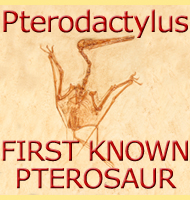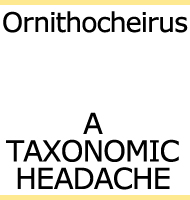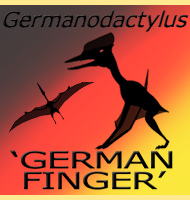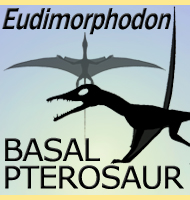


Brasileodactylus
Name:
Brasileodactylus
(Brasil finger).
Phonetic: Bra-zil-eoh-dak-ty-lus.
Named By: Alexander Kellner - 1984.
Classification: Chordata, Reptilia, Pterosauria,
Pterodactyloidea.
Species: B. araripensis (type).
Type: Piscivore.
Size: Uncertain due to incomplete fossil material.
Skull 42.9 centimetres long.
Known locations: Brazil - Santana Formation.
Time period: Aptian of the Cretaceous.
Fossil representation: Several specimens together
revealing partial skull and partial post cranial remains.
Brasileodactylus
may have had a crest on the back of its head, and this is why
Ludodactylus
has been suggested as a synonym of Brasileodactylus.
Both
pterosaurs
have very similar skulls, but Ludodactylus
has a crest
similar in appearance to that of Pteranodon.
If Brasileodactylus is
proven to have a crest like Ludodactylus then Ludodactylus
would most
likely become a synonym of Brasileodactylus.
Brasileodactylus
was originally assigned to the Ornithocheiridae group of pterosaurs,
although many researchers now place Brasileodactylus into the more
general Pterodactyloidea which includes all 'advanced' pterosaurs.
Still, Brasileodactylus has a similar skull
morphology to
Ornithocheirid pterosaurs, although it does lack crests on the snout,
as can be seen in Ornithocheirus
itself.
Further reading
- Ocorr�ncia de uma mandibula de pterosauria (Brasileodactylus
araripensis, nov. gen.; nov. sp.) na Forma��o Santana, Cret�ceo da
Chapada do Araripe, Cear�-Brasil. - Anais XXXIII Cong. Brasil. de Geol,
578–590. - A. W. A. Kellner - 1984.
MORE PTEROSAURS!
 |
 |
 |




